News
Exclusive: OER presents 17th annual review of Oman’s top 20 leading listed companies for 2015
As stated in the World Bank’s Global Economic Prospects report, the global growth disappointed again in 2015, and is expected to recover at a slower pace than previously forecast. “More than 40 per cent of the world’s poor live in the developing countries where growth slowed in 2015,”… said World Bank group president Jim Yong Kim. Growth fell short of expectations in 2015, to 2.4 per cent, from 2.6 per cent in 2014.


As stated in the World Bank’s Global Economic Prospects report, the global growth disappointed again in 2015, and is expected to recover at a slower pace than previously forecast. “More than 40 per cent of the world’s poor live in the developing countries where growth slowed in 2015,”… said World Bank group president Jim Yong Kim. Growth fell short of expectations in 2015, to 2.4 per cent, from 2.6 per cent in 2014. The disappointing performance was mainly due to a continued deceleration of economic activity in emerging and developing economies amid weakening commodity prices, global trade, and capital flows. The advanced economies achieved a below trend average growth of 1.3 per cent whereas many emerging markets also experienced a slowdown to below trend growth of 4.3 per cent. Global GDP growth was 2.4 per cent in 2015.
The report goes on to say that the recovery in major high-income countries gained traction in 2015. This has been increasingly driven by stronger domestic demand, particularly in the US, where employment conditions are robust. In the Euro Area, credit growth is picking up and unemployment is declining. The recovery remains fragile in Japan despite substantial policy stimulus. With external demand negatively affected by a slowdown in large emerging market economies, growth forecasts across major high-income economies in 2016 have been shaded down, but growth should still show some improvement from 2015. The tightening cycle of the US Federal Reserve is projected to be very gradual, while policy accommodation will likely to continue in the Euro Area and Japan. China’s gradual slowdown and rebalancing continued in 2015, as further deceleration in sectors with excess capacity was partially offset by robust growth in services.
The year 2015 saw the continuing decline of oil prices which eroded the Omani revenue as the economy depends on oil income to the extent of about 34 per cent of its total revenue. Due to this substantial reduction in the oil prices, GDP at current prices registered a decline of 14 per cent to RO27bn compared to last year.
The year 2015 closed with an average oil price of $62 per barrel compared with an average price of $103.23 in 2014 and the budgeted price of $75 for 2015. Oil production in 2015 increased again marginally to 965,000 barrels per day. The government’s continued emphasis on diversifying the economy away from dependence on oil continued to gain further momentum during 2015. Non-oil revenue grew by about 7 per cent.
The year 2015 continued to be a challenging year for world stock markets. Among the developed markets, US registered a 0.76 per cent return. Some European markets fared better. In local currency terms, Germany returned 10 per cent, France 9.5 per cent while Spain was down by 6 per cent and UK by 4 per cent. Japan was up by 9 per cent. Emerging markets were a very mixed bag with India down by 5 per cent, China up by 10 per cent and Brazil down by 12 per cent. WTI oil price during the year ranged from $37 per barrel to around $47 and closing the year at about $37. Gold declined from $1,184 at the beginning of the year to $1,060 per ounce by the end of 2015.
For the year 2015, the MSM Index decreased by 14.77 per cent. This is compared to a decrease of 7.19 per cent in the previous year. The industrial sector was the largest loser at 19.06 per cent for the year 2015. The next was financial sector which decreased by 15.99 per cent during the year. The services sector closed the year with a loss of 12.07 per cent. A total of 5.7 billion shares got traded during the year, amounting to an aggregate turnover of RO1.389bn, which was down by about 39 per cent compared to 2014. The MSM 30 Index started the year at 6,343 closing the year at 5,406 points. With a negative return of 14.77 per cent for the year, the MSM was the third best performing market in the GCC. Kuwait was the best performing showing a gain of 14.09 per cent followed by Abu Dhabi in the second position with a return of 4.89 per cent. Muscat and Bahrain followed in joint third place with a return of 14.77 per cent, while Qatar finished fifth at 15.11 per cent, Dubai sixth at 16.51 per cent and Saudi seventh with 17.06 per cent.
During the year 2015, the revenues of Oman’s 20 largest companies showed an increase of RO231mn. Total revenues for the OER Top20 companies increased by 5.5 per cent to RO4,416mn. Corporate performance for the year 2015 registered an overall decrease. The profits for the year 2015 decreased by 22.6 per cent to RO475mn from RO613mn in 2014. The total market cap of the OER Top20 companies on December 31, 2015 was RO5,421mn, which decreased by 8.7 per cent compared to 2014. On March 31, 2016, the market cap of the Top20 decreased further to RO5,163mn. The OER Top20 companies represent 34 per cent of the total market cap of the MSM of RO15,780mn at the end of 2015.The average P/E ratio of the OER Top20 based on the profits of the year 2015 and the share price on March 31, 2016 is 8.93 times earnings.
Who is out and who is in
There are three new companies in the OER Top20 this year. Phoenix Power comes in straight into the 15th position, Bank Sohar in the 16th place and HSBC Oman (which was erroneously omitted from the list last year) in the 18th place.
The ranking of Oman’s 20 largest companies in order of revenue produces a list, which includes eight companies from the services sector, six companies from the industrial sector, and six from the financial sector.
Omantel has regained its position as the number one company in Oman at the expense of Bank Muscat which has slipped to the number two position. Omantel has shown a growth in revenue of 6.87 per cent compared to the previous year. Oman Oil has moved up three places to the third position, while Al Maha retained the fourth place and Galfar slipped two places to number five. Shell which was number five last year moved to the sixth position this year.
Omantel is the largest company in Oman with the largest market capitalisation as well as the best dividend yield for the year 2015. Chairman of Omantel, Eng Sultan Hamdoon Al Harthy, in his report to the shareholders explains that the total revenue increased by 7.3 per cent. The increase is contributed by service, wholesale and mobile business segments. He further explains that the total operating expenses increased by 11.8 per cent. Al Harthy states that the group has achieved a profit of RO115mn; however, after provisions for impairment in WTL & VEOS Programme, the net profit after tax was RO48.5mn compared to the net profit of RO115.217mn in 2014. He adds that the total subscriber base has recorded a growth of 1.3 per cent. The total number of subscribers has reached 3.384 million compared to 3.341 million in 2014.
Al Harthy states that the Omani telecom market will be mainly influenced by two key dynamics- the oil price and the continuous evolution of OTT players. In order to tackle these market dynamics, Al Harthy states that Omantel developed a new corporate strategy with a focus on maximising the share of wallet and value per customer, through expansion beyond the current core business and becoming a key differentiator companion of choice, as well as creator and enabler of digital ecosystems. The execution of this strategy will enable Omantel to maintain its leading position in the market and continue to maximise returns to the shareholders.
The five most profitable companies of 2015 include four banking and financial companies and one Telecommunication leader. Bank Muscat retains the number one position as the most profitable company in 2015. NBO has jumped one place to number two position from being number three last year. Bank Dhofar has moved up one place to the number three slot. OREDOO has improved one place to the number four position. Ominvest has moved into the top five most profitable companies in Oman this year at the expense of Omantel.
Chairman of Bank Muscat, Khalid bin Mustahail Al Mashani states in his year-end report to the shareholders that the results achieved have been encouraging despite the challenging global economic and financial situation, marked by volatile oil prices during the year. The key business lines of the bank recorded healthy performance on expected lines. He explains that the bank achieved a net profit of RO175.45mn as against a net profit of RO163.23mn in 2014, an increase of 7.5 per cent.
Mashani adds that during 2015, the basic earnings per share was RO0.077 as against RO0.071 in 2014. The bank’s capital adequacy ratio stood at 16.1 per cent against the minimum required level of 12.625 per cent as per Basel III regulations issued by the Central Bank of Oman. Mashani goes on to say that the board has proposed a dividend of 30 per cent, 25 per cent in the form of cash, 5 per cent in the form of bonus shares.
Mashani advises that cautious optimism prevails for Oman’s economy in 2016. The austerity measures to plug falling oil revenues are expected to help Oman maintain the economic and financial position. Mashani adds that the 2016 budget and the ninth five-year plan projects provide room for the private sector to participate in infrastructure projects which will continue to give a fillip to the economy as well as generate employment opportunities.
Phoenix Power, which was listed on the MSM by way of a successful IPO in June 2015, has shown the highest growth in profits by an enormous 154.35 per cent and comes in straight at the number one spot followed by OMINVEST, which has shown growth in profits by 30.85 per cent. Three of the five top companies showing the highest growth of profit from last year-Phoenix Power, OMINVEST and Bank Dhofar-are new on the list. NBO has slipped one place to the third position and Oman Flour retained their fourth place as last year.
Chairman of Phoenix Power, Khalid Jolo in his report to the shareholders states that the company which owns and operates 2,000 MW Sur Independent Power Plant has a 15-year power purchase agreement with OPWP. The plant commenced commercial operations in December 2014. Jolo adds that the company launched its IPO offering 35 per cent of its shares which was successfully completed in June 2015.
Jolo states that during the year, the company achieved a net profit of RO28.77mn. Net Revenues were RO102mn and costs were RO65mn. He further states that he financial results of 2015 were not comparable to 2014 as the company only commenced operations on December 11, 2014. Jolo goes on to say that all reasonable measures will be taken by the management to ensure high standards of health, safety, environmental compliance, reliability and availability achieved in 2015 are maintained.
Three of the top five companies that have the highest amount of equity employed are from the financial sector. Four of them remain the same as last year. The newcomer on the list at number five is OMINVEST which has replaced Renaissance Services.
Chairman of NBO, Mohammed Mahfoodh Al Ardhi in his report to the shareholders states that the bank achieved a net profit of RO60.1mn for the year compared to RO50.3mn for 2014, an increase of 20 per cent, demonstrating strong results in line with the bank’s strategy of expansion and ambition to deliver sustainable growth. Al Ardhi remarks that lower deposits costs and a better asset mix have enabled the bank to maintain its spreads at a time when asset yields were falling rapidly. The year also witnessed a successful perpetual, five-year non call bond issue, eligible as tier 1 capital under Basel 3 and Central Bank of Oman regulations. The UAE operations continued to witness strong growth in 2015. Loans and advances grew by 79 per cent and net profit grew by 179 per cent.
Al Ardhi adds that the return on shareholders’ funds, a key measure of profitability, has improved to 15.9 per cent from 14.7 per cent last year. Al Ardhi states that despite a mediocre economic recovery, the journey ahead for the banking sector in Oman offers significantly more cause for optimism. There are great opportunities and significant challenges in 2016. However, he is confident that the bank is uniquely placed to unlock exciting opportunities for the banking sector in Oman and across the region.
This year, three of the top five companies that have the highest market capitalisation on the MSM are banks. All the top five companies in this category are unchanged from last year.
The company report of Ooredoo states that revenues for the year 2015 grew by 11.2 per cent to RO252.1mn compared with RO226.7mn in 2014. The growth is driven by increases in both mobile and fixed data revenue.
EBITDA for the year 2015 stood at RO137.5mn compared to RO117.7mn for the year 2014. EBITDA growth for the year is driven by higher revenue.
Net profit for 2015 was RO41.6mn, compared with RO37.9mn in 2014. Increase in net profit for the year is driven by higher EBITDA partially offset by higher depreciation cost due to investment in network modernisation. Net profit for the year 2015 was also impacted by RO4.1mn due to provision for swapped out assets as part of network modernisation. Total number of customers grew by 7.1 per cent, in 2015 from 2,601,704 to 2,787,999.
Commenting on the results, CEO, Greg Young said, “We are very pleased with our revenue growth this year, in what was a challenging economic environment. This reflects the fact that we are continuing to respond to changing customer needs and provide them with the products, services and offers that they want, through both our mobile and fixed offerings. Our aim is to inspire and innovate; to meet the ever-changing needs of customers and businesses in all sectors across the Sultanate.”
He added, “We also strive for excellence in customer service, which is reflected in our increased customer base. The investment in modernising and expanding our network is also a factor in customer growth and we will continue to provide the coverage and speed, with our expanding 4G footprint as well as our recently completed national fiber backbone. With the completion of our fiber backbone, we can provide a second-to-none customer experience.”
Of the top five companies with the best returns on equity for the year 2015, four are from the services sector and one from the Industrial sector. The two new comers in this list are Phoenix Power at the fourth position and Oman Oil Marketing at number five. Al Maha Petroleum Product and Oman Refreshment Co have moved out of this list.
Vice chairman of SMN Power Holding, Abdullah Al Yahyaey in his report to the shareholders for the year ended December 31, 2015 explained that the health and safety performance was excellent with no lost time injuries (LTI) in line with previous years. During the year, the company through Barka II and Al Rusail plants achieved excellent operational performance. Barka II commercial availability for the year was 90.9 per cent (91.7 per cent in 2014) for power and 94.1 per cent (94.6 per cent in 2014) for water. At Rusail, the power availability was 87.6 per cent (89.2 per cent in 2014).
He states that the company generated consolidated net profit of RO9.02mn for 2015 compared to RO8.62mn for 2014. The increase in net result is mostly attributable to reduction in financial cost. With net earnings of 45 baiza per share in 2015, the board was recommending a final dividend of 22 baiza per share for the year 2015, in addition to the interim dividend of 22 baiza paid in November 2015. Al Yahyaey adds that all reasonable measures are taken by the management of the company to maintain the excellent plant availability levels in 2016.
Three of the top five earnings per share growth companies are newcomers on this list. Phoenix Power comes in at the number one position. OMINVEST and Shell are also new comers in the second, and fifth place respectively. NBO has slipped one place to number three while Oman Flour Mills retained its fourth position same as last year. Renaissance, Al Jazeera and Ooredoo who were on this list last year have all dropped out.
Chairman of Shell, Chris Breeze in his annual report to the shareholders states that the year 2015 witnessed a significant fall in oil prices resulting in a budget deficit for Oman. Despite these challenging conditions, the company posted strong financial results by growing net income by 15.5 per cent compared to the previous year.
Breeze adds that revenues for the year 2015 were RO336mn, 7 per cent lower than last year mainly due to lower aviation volumes. The 2015 net profit was RO14.18mn compared to RO12.28mn in 2014. Breeze further states that the full year earnings for 2015 were 142 baiza compared to 123 baiza in 2014. The board is proposing a higher dividend of 106 baiza per share compared to 92 baiza in 2014. Breeze concludes that the macro economic landscape of 2016 will present challenges to the company’s established operations which it is already well placed to respond to.
Out of the 20 companies, only three companies showed a share price growth during the year 2015. Two of these companies Ooredoo and SMN Power are the same as last year and OMINVEST is a new comer on the list. Omantel, Areej Vegetable and Oman Oil which were on this list are out.
Khalid Mohamed Al Zubair, chairman of OMINVEST, in his report to the shareholders states that despite extremely difficult market conditions, the company delivered healthy performance for the year and achieved some major milestones, including the successful merger with ONIC Holding which made the company much stronger, well diversified, and one of the largest investment companies.
Zubair states that during 2015 the group’s revenues rose by 60 per cent to RO142.89mn and group net profit grew by 31 per cent to RO37.2mn. Earnings per share at the group level increased to 52 Baisa from 39 Baisa, a growth of 33 per cent. The equity base at the group level has also increased to RO219.94mn from OMR 132.67 million last year. Zubair further adds that as market conditions deteriorated significantly, OMINVEST was prudent and pro-active in managing its financial and business affairs. As a result, the company is well placed to respond to continued challenges in the market and also seize attractive business and investment opportunities.
Omantel has maintained its number one position as the best dividend yielding company. Three new companies have entered into the ranking of the best five dividend yield companies, with Bank Dhofar securing position two, NBO three and Oman Flour Mills five. Areej Vegetables has slipped one position from three to four. SMN Power, Ooredoo and Al Jazeera Steel who were on this list last year have moved out.
Engineer Abdul Hafidh Salim Rajab Al Aujaili, chairman of Bank Dhofar, in his report to the shareholders states that amid the challenging economic and financial situation, the bank has continued to grow in all key areas in the year 2015.
The key profitability indicators show a positive growth with net interest and financing income achieving a solid growth of 17.47 per cent. Non-interest and non-financing income has also grown by 13.39 per cent.
The net profit for the year 2015 achieved by the bank is RO46.77mn, compared to RO40.45mn showing a strong growth of 15.62 per cent year-on-year. Al Aujaili states that the board of directors recommends a cash dividend of 15 per cent and a bonus share issue of 10 per cent.
-
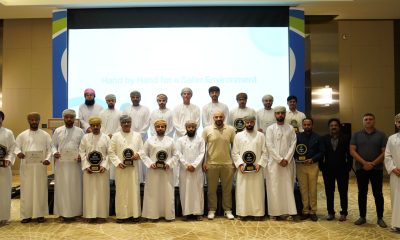
 Banking & Finance2 weeks ago
Banking & Finance2 weeks agoOman Oil Marketing Company Concludes Its Annual Health, Safety, Environment, and Quality Week, Reaffirming People and Safety as a Top Priority
-

 Economy2 months ago
Economy2 months agoMaal Card: What Oman’s New National Payment Card Means for Everyday Users
-

 News2 months ago
News2 months agoSheikh Suhail Bahwan, Chairman of Suhail Bahwan Group, Passes Away
-

 News1 month ago
News1 month agoOIG Appoints New CEO to Lead Its Next Chapter of Excellence
-
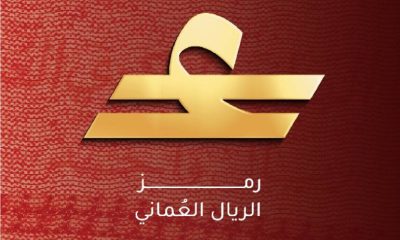
 Economy2 months ago
Economy2 months agoOman Unveils Official Omani Rial Symbol in Landmark Move to Boost Global Currency Presence
-
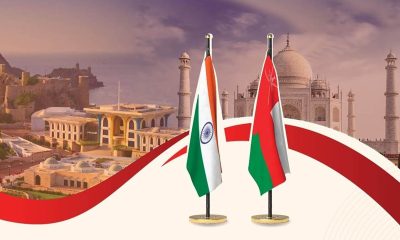
 News1 month ago
News1 month agoReport: How India & The Middle East Are Exploiting Immense Economic Synergies
-
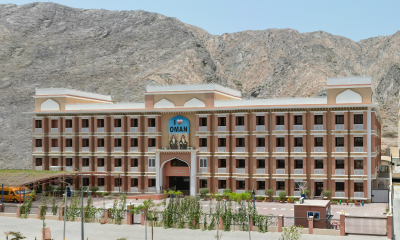
 Uncategorized1 month ago
Uncategorized1 month agoOman’s ISWK Cambridge Learners Achieve ‘Top in the World’ and National Honours in June 2025 Cambridge Series
-
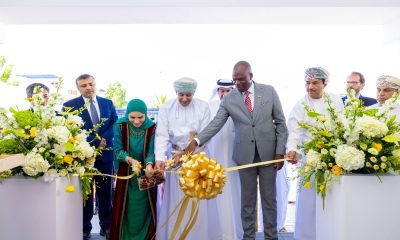
 Trade2 months ago
Trade2 months agoConsulate Office of the Republic of South Africa opens in Muscat, enhancing bilateral relations





























You must be logged in to post a comment Login